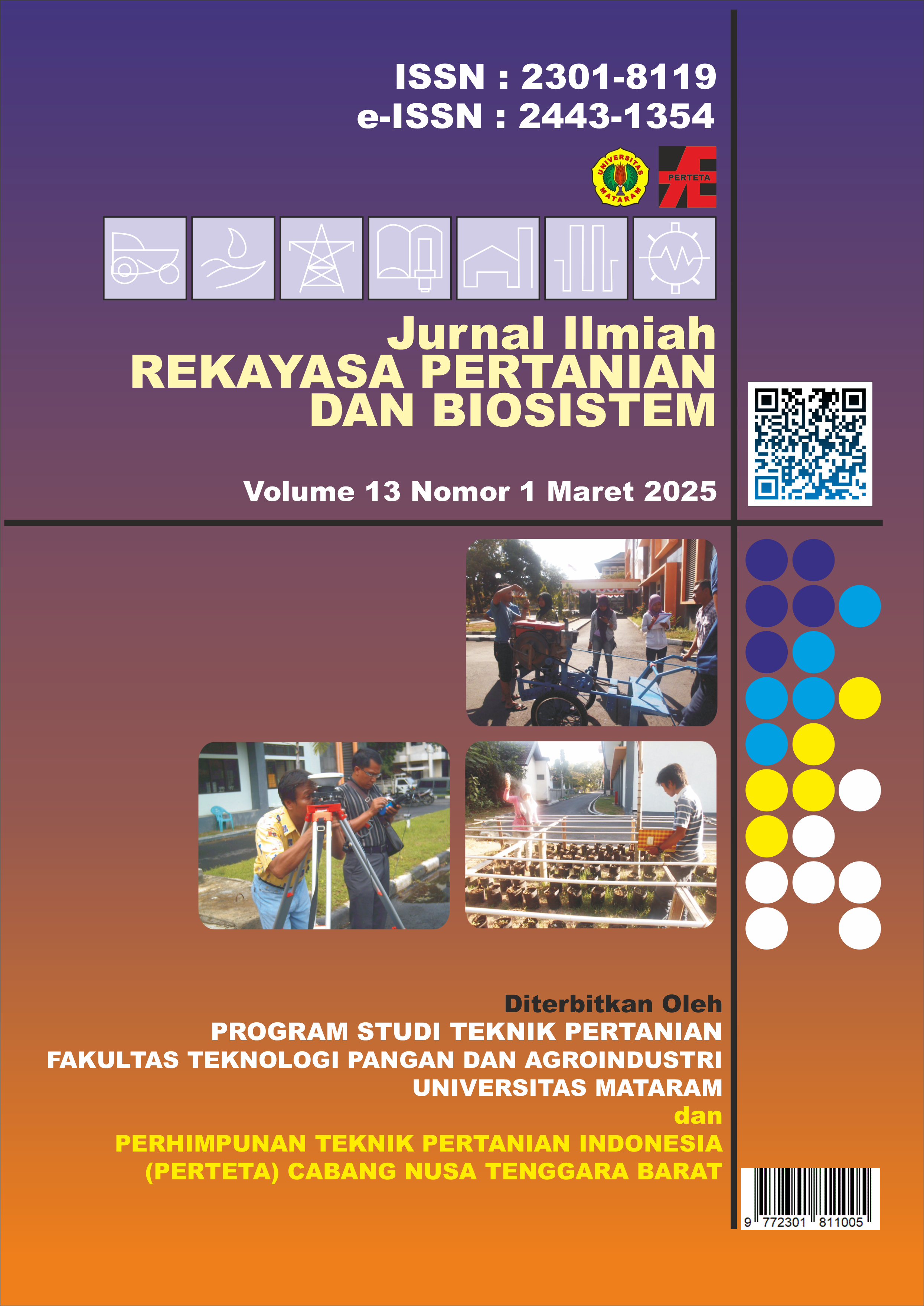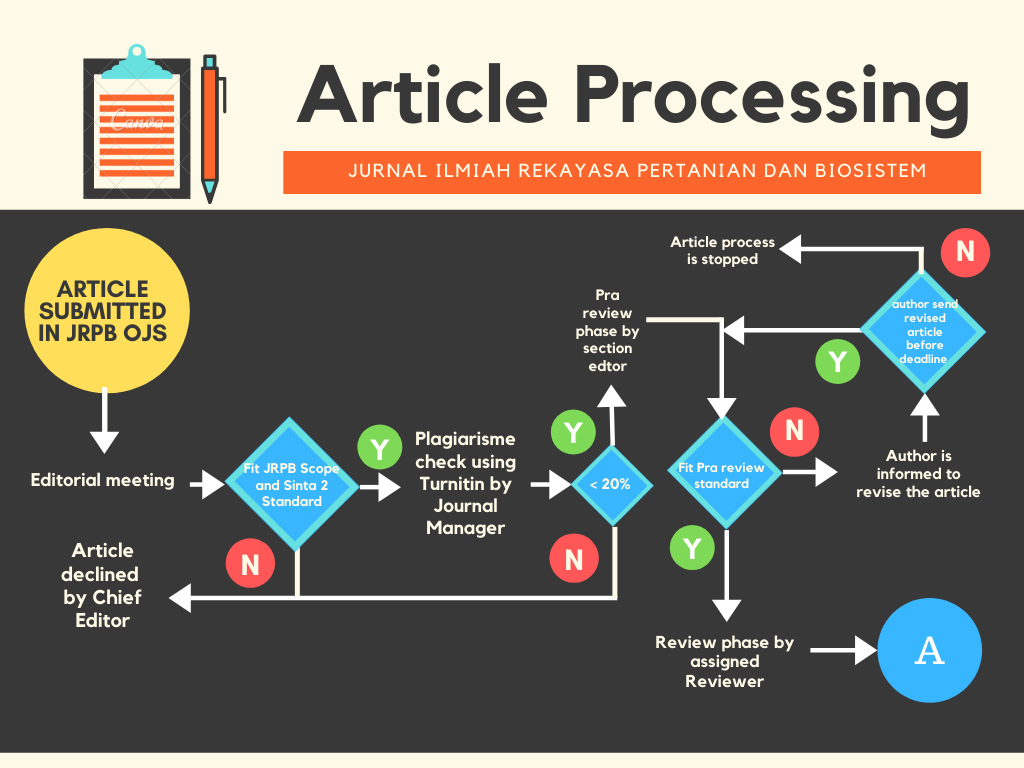Land Suitability Evaluation for Durian Cultivation in Universitas Muhammadiyah Mataram Educational Forest (KHDTK UMMAT)
Authors
Ahmad Fatoni , Erni Romansyah , Suhairin Suhairin , Ida Wahyuni , Hasanuddin Molo , Ahmad SuriadiDOI:
10.29303/jrpb.v13i1.1141Published:
2025-03-27Issue:
Vol. 13 No. 1 (2025): Jurnal Ilmiah Rekayasa Pertanian dan BiosistemKeywords:
durian, land suitability evaluation, NTFP, KHDTK, UMMATArticles
Downloads
How to Cite
Downloads
Abstract
The Forest Area with Special Educational Purposes (KHDTK) at Muhammadiyah University of Mataram, covering 93.55 hectares, has undergone enrichment with eucalyptus and agarwood plants since 2019. In 2024, further enrichment is planned with durian, avocado, jackfruit, and longan. However, concerns have arisen regarding the suitability of the KHDTK area for durian cultivation, necessitating a land suitability evaluation. This study aims to determine the suitability classes, limiting factors, and management recommendations for durian and other selected plants. Using a rigid grid method, a soil survey and evaluation were conducted, assessing 14 parameters related to soil, climate, and land. The findings indicate that the land suitability for durian falls into class S3, with limiting factors including coarse soil texture, low levels of nitrogen, phosphorus, and potassium, insufficient rainfall, and a slope of 16-30%. Recommended management strategies include the application of organic and NPK fertilizers, installation of pipe irrigation, and contour-aligned planting. Enrichment with durian in the KHDTK area is suggested to be developed. This study contributes to sustainable land management by providing scientific data for durian cultivation in KHDTK areas. In addition, the results can support the development of conservation-based agroforestry and agritourism.
References
Alpiana, A., Firaz, M. F., Adiansyah, J. S., Ariyanto, A., Rahmawati, D., & Isfanari, I. (2021). Program “Planting Trees” untuk Kekayaan Biodiversity di Hutan Pendidikan Universitas Muhammadiyah Mataram. SINERGI: JURNAL PENGABDIAN, 4(1), 24–27. https://doi.org/10.31764/SJPU.V4I1.7318
Amran, A., Ariffin, M. R., Isa, I. M., Ahmed, O. H., Herman, G., Muhamad, S. H., Nor, N. A. M., & Khairuddin, M. N. (2023). Physicochemical Properties of Soil Cultivated with Durian (Durio zibethinus Murr.) in Gua Musang, Kelantan. Agrivita, 45(2), 278–287. https://doi.org/10.17503/agrivita.v45i2.3601 DOI: https://doi.org/10.17503/agrivita.v45i2.3601
Dhika, M., Sukma, R. R., Agustiani, A., Ines Larrisa, D., & Maroeto, M. (2022). Evaluation Of Land Capabilities For Coffee And Durian Crops To Sustainable Agriculture. Jurnal Agronomi Tanaman Tropika (Juatika), 4(2), 295–305. https://doi.org/10.36378/juatika.v4i2.1913 DOI: https://doi.org/10.36378/juatika.v4i2.1913
Djaenudin, D., Marwan, H., Subagjo, H., & Hidayat, A. (2011). Petunjuk Teknis Evaluasi Lahan Untuk Komoditas Pertanian (A. Hidayat, H. Suhardjo, & Hikmatullah (Eds.); Kedua). Balai Besar Litbang Sumberdaya Lahan Pertanian, Badan Litbang Pertanian, Bogor.
Dumipto, P. K., Rayes, M. L., & Agustina, C. (2019). Evaluasi Kesesuaian Lahan untuk Tanaman Tebu pada Lahan Karst Formasi Wonosari (TMWL) Kecamatan Gedangan Kabupaten Malang. Jurnal Tanah Dan Sumberdaya Lahan, 6(2), 1361–1374. https://doi.org/10.21776/ub.jtsl.2019.006.2.17 DOI: https://doi.org/10.21776/ub.jtsl.2019.006.2.17
Fazlil Ilahi, W. F., Rosdi, N. S. I., Zulkapli, M. F., Che’ Ya, N. N., Mat Su, A. S., Ping, T. N., Ramlee, S. I., & Hock, O. C. (2024). Growth performance of durian based on crop water requirement (ETc) using irrigation system. Journal of Tropical Resources and Sustainable Science (JTRSS), 12(1), 51–56. https://doi.org/10.47253/jtrss.v12i1.1365 DOI: https://doi.org/10.47253/jtrss.v12i1.1365
Hermita, N., Utama, P., Fatmawaty, A. A., Andree, Syailendra, & Silviyani, E. (n.d.). Penilaian Kesesuaian Lahan Tanaman Perkebunan Berbasis Sistem Informasi Geografis (SIG) di Kecamatan Ciomas Kabupaten Serang. Jurnal Agroekotek, 15(1), 56–69. DOI: https://doi.org/10.33512/jur.agroekotetek.v15i1.19576
Huy, T. G., Hoan, N. K., Thi, N. P. A., & Khang, D. T. (2023). Advancements in Genetic Diversity and Genome Characteristics of Durians (Durio spp.). Annual Research & Review in Biology, 38(5), 12–23. https://doi.org/10.9734/arrb/2023/v38i530584 DOI: https://doi.org/10.9734/arrb/2023/v38i530584
Ibrahim, I., Johari, H. I., Mas’ad, M., Rochayati, N., Khosiah, K., Sukuryadi, S., Herianto, A., Arif, A., Junaidin, J., & Mahsup, M. (2021). Kegiatan Penghijauan Di Areal Hutan Pendidikan Universitas Muhammadiyah Mataram. SELAPARANG Jurnal Pengabdian Masyarakat Berkemajuan, 4(2), 261. https://doi.org/10.31764/jpmb.v4i2.4064 DOI: https://doi.org/10.31764/jpmb.v4i2.4064
Johari, H. I., Sukuryadi, S., Ibrahim, I., Adiansyah, J. S., & Nurhayati, N. (2022). Potensi Pengelolaan Kawasan Hutan Dengan Tujuan Khusus Hutan Pendidikan Dan Pelatihan Universitas Muhammadiyah Mataram. SELAPARANG: Jurnal Pengabdian Masyarakat Berkemajuan, 6(3), 1484. https://doi.org/10.31764/jpmb.v6i3.9902 DOI: https://doi.org/10.31764/jpmb.v6i3.9902
Karim, H., Zhiddiq, S., & Suprapta, S. (2017). Potential Land for Durian Plant (Durio Zibethinus Murr) In Mungkajang Sub-District Palopo City. UNM Geographic Journal, 1(1), 48–54. https://doi.org/10.26858/UGJ.V1I1.5280 DOI: https://doi.org/10.26858/ugj.v1i1.5280
Nardi, M., Husaini, & Iskandar, D. (2024). Visualisasi Data Statistik Komoditas Perkebunan Durian di Kecamatan Tangse Berbasis Quantum GIS. Sagita Academia Journal, 2(1), 80–88. https://doi.org/10.61579/SAGITA.V2I1.61 DOI: https://doi.org/10.61579/sagita.v2i1.61
Osman, K. T. (2013). Problem Soils and Their Management. Soils, 161–174. https://doi.org/10.1007/978-94-007-5663-2_11 DOI: https://doi.org/10.1007/978-94-007-5663-2_11
Pakasi, S., Siahaan, A., Najoan, J., Pioh, D., & Wantasen, S. (2022). Evaluation of Land Suitability for Durian (Durio zibethinus M.) Plants In Kombi District, Minahasa Regency Based on Geographic Information Systems. Ekoton, 4(1), 7–16. https://doi.org/10.35801/ekoton.v5i1.49530 DOI: https://doi.org/10.35801/ekoton.v5i1.49530
Ramadhan, S., Nugroho, Y., Program, S., & Kehutanan, S. (2023). Evaluasi Kesesuaian Lahan Tanaman Durian (Durio zibethinus) di Daerah Aliran Sungai (DAS) Desa Artain Kecamatan Aranio Kabupaten Banjar. Jurnal Sylva Scienteae, 6(2), 324–324. https://doi.org/10.20527/JSS.V6I2.8546 DOI: https://doi.org/10.20527/jss.v6i2.8546
Said, H., Toloza, A., Rab, G., Brunner, T., Heng, L. K., Strauss, P., Mbaye, M., & Dercon, G. (2023). Mobile Gamma-ray spectrometry for soil texture mapping. EGU23. https://doi.org/10.5194/EGUSPHERE-EGU23-6905 DOI: https://doi.org/10.5194/egusphere-egu23-6905
Seong II Yeom, Park, S. W., & Ahn, J. (2019). Determination of Volume Porosity and Permeability of Drainage Layer in Rainwater Drainage System Using 3-D Numerical Method. Journal of the Korea Academia Industrial Cooperation Society, 20(8), 449–455. https://doi.org/10.5762/KAIS.2019.20.8.449
Thorogood, C. J., Ghazalli, M. N., Siti-Munirah, M. Y., Nikong, D., Kusuma, Y. W. C., Sudarmono, S., & Witono, J. R. (2022). The king of fruits. Plants People Planet, 4(6), 538–547. https://doi.org/10.1002/ppp3.10288 DOI: https://doi.org/10.1002/ppp3.10288
Wibowo, F. A. C., Suryanto2, P., & Faridah, E. (2019). Ekofisiologi dan Peluang Pengembangan Durian (Durio zibethinus) Dengan Sistem Agroforestri di Lereng Selatan Gunung Merapi, Indonesia. Jurnal Ilmu Kehutanan, 13, 195–209. DOI: https://doi.org/10.22146/jik.52441
Wu, S. W., Lin, C. Y., Sun, M. Y., & Lu, S. Y. (2022). Estimation of soil depth in the Liukuei Experimental Forest by using conceptual model. Catena, 209, 105839. https://doi.org/10.1016/j.catena.2021.105839 DOI: https://doi.org/10.1016/j.catena.2021.105839
Y Xuan, N. U., Hoa, B. T., Diep, P. H., & Minh, T. Van. (2024). In vitro Apical Shoot Culture and Callus Formation of Durian (Durio zibethinus Murray). Asian Journal of Biotechnology and Bioresource Technology, 10(3), 1–14. https://doi.org/10.9734/ajb2t/2024/v10i3207 DOI: https://doi.org/10.9734/ajb2t/2024/v10i3207
Zgorelec, Z., Grahovac, B., Percin, A., Jurkovic, V., Gandjaeva, L., & Maurović, N. (2019). Comparison of two different CEC determination methods regarding the soil properties. Agriculturae Conspectus Scientificus, 84(2), 151–158.
Zhang, S., Ma, Q., Qihua, K., Zhang, K., & Zhu, T. (2023). Effects of rock outcrops on runoff and erosion from karst slopes under simulated rainfall. Land Degradation and Development, 35(3), 949–967. https://doi.org/10.1002/LDR.4963 DOI: https://doi.org/10.1002/ldr.4963
License
Copyright (c) 2025 Ahmad Fatoni, Erni Romansyah, Suhairin Suhairin, Ida Wahyuni, Hasanuddin Molo, Ahmad Suriadi

This work is licensed under a Creative Commons Attribution-ShareAlike 4.0 International License.
Authors who publish with this journal agree to the following terms:
- Authors retain copyright and grant the journal right of first publication with the work simultaneously licensed under a Creative Commons Attribution License 4.0 International License (CC-BY-SA License). This license allows authors to use all articles, data sets, graphics, and appendices in data mining applications, search engines, web sites, blogs, and other platforms by providing an appropriate reference. The journal allows the author(s) to hold the copyright without restrictions and will retain publishing rights without restrictions.
- Authors are able to enter into separate, additional contractual arrangements for the non-exclusive distribution of the journal's published version of the work (e.g., post it to an institutional repository or publish it in a book), with an acknowledgement of its initial publication in Jurnal Ilmiah Rekayasa Pertanian dan Biosistem (JRPB).
- Authors are permitted and encouraged to post their work online (e.g., in institutional repositories or on their website) prior to and during the submission process, as it can lead to productive exchanges, as well as earlier and greater citation of published work (See The Effect of Open Access).










